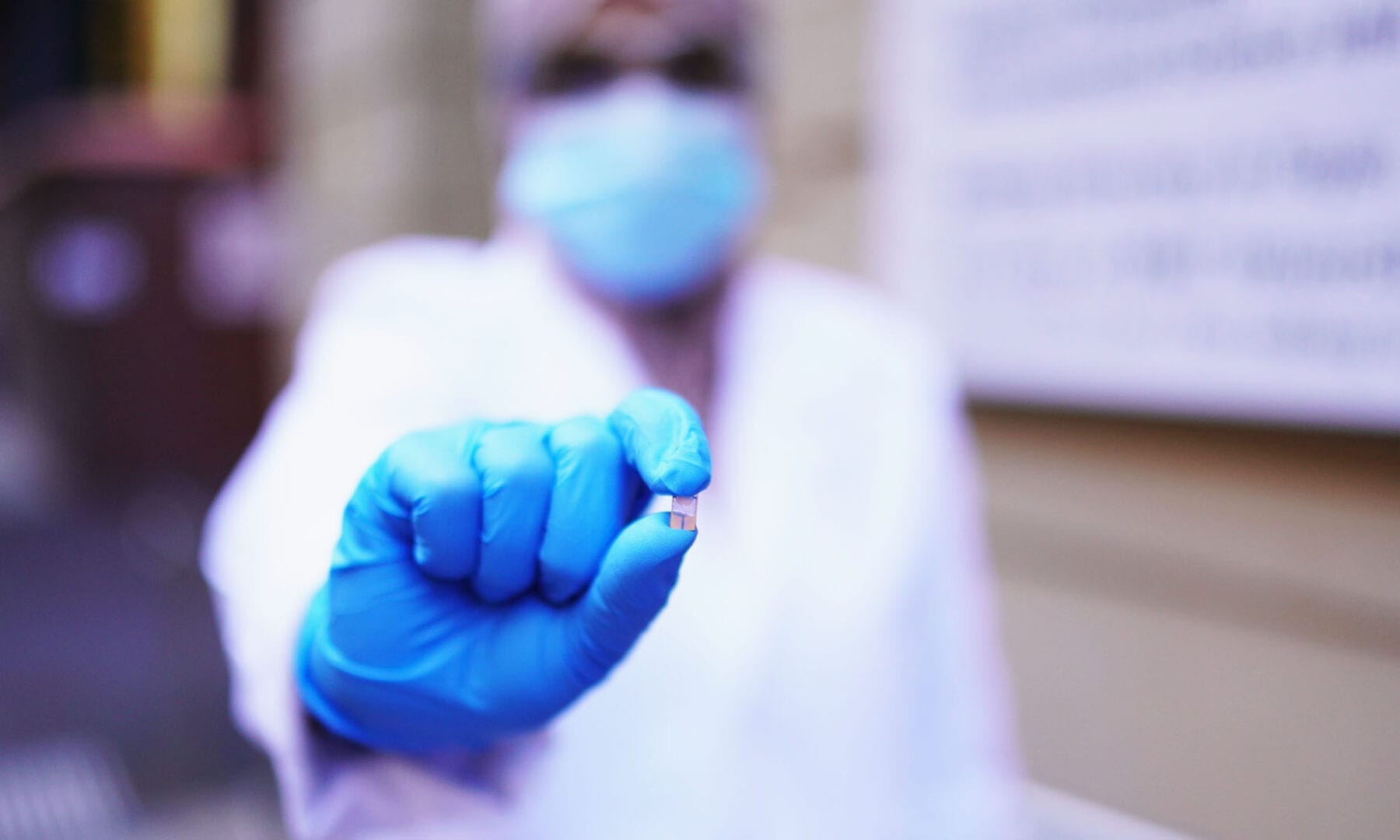
A Florida State University researcher has discovered an artificial material that mimics photosynthesis and potentially creates a sustainable energy source.
In The Journal of Physical Chemistry, Assistant Professor of Chemical Engineering Jose L. Mendoza-Cortes details how this new material efficiently captures sunlight and then, how the energy can be used to break down water into oxygen (O2) and hydrogen (H2). This process is known as oxidation, and it is also what happens during photosynthesis when a plant uses light to break down water and carbohydrates, which are the main energy sources for the plant.
His discovery generates exciting new prospects for how this process could be used to forge new energy sources in a carbon neutral way. Potentially, hydrogen could be transported to other locations and burned as fuel.
“In theory, this should be a self-sustaining energy source,” Mendoza-Cortes said. “Perhaps in the future, you could put this material on your roof and it could turn rain water into energy with the help of the sun.”
But, unlike many other energy sources, this won’t have a negative effect on the environment.
“You won’t generate carbon dioxide or waste,” he said.
Mendoza-Cortes, a computational and theoretical chemist, said the challenge he faced was designing something that didn’t rust from the process of breaking down water that also trapped the energy and was inexpensive to create. To do this, he initially developed a multilayered material out of manganese oxide, commonly known as birnessite.
But something exciting happened when Mendoza-Cortes and his team peeled back the layers of the material so just a single layer of the material remained — it began trapping light at a much faster rate.
In technical terms, it transitioned from an indirect band gap material to a direct band gap one.
Light with photo energy can penetrate indirect band gap materials much more easily without getting absorbed and used for other purposes. Silicon, for example, is the most commonly known indirect gap band material. But to make the material effective, silicon solar cells are typically stacked and thus hundreds of micrometers thick. If they were any thinner, light would simply pass through them.
Creating a single-layer material that can efficiently trap light is a much more desirable outcome because it is much simpler and cheaper to manufacture.
“This is why the discovery of this direct band gap material is so exciting,” Mendoza-Cortes said. “It is cheap, it is efficient and you do not need a large amount to capture enough sunlight to carry out fuel generation.”
Read more: Researcher develops material to create sustainable energy source
The Latest on: Manganese oxide
[google_news title=”” keyword=”Manganese oxide” num_posts=”10″ blurb_length=”0″ show_thumb=”left”]
via Google News
The Latest on: Manganese oxide
- Canadian Manganese Co Inc CDMNFon April 19, 2024 at 5:27 am
Morningstar Quantitative Ratings for Stocks are generated using an algorithm that compares companies that are not under analyst coverage to peer companies that do receive analyst-driven ratings ...
- Lanxess and IBU-tec to develop iron oxides for LFP EV batterieson April 14, 2024 at 7:59 pm
Collaboration aims to improve performance of LFP cathode material; reduced carbon footprint of batteries through use of local raw materials; focus on European value chain for LFP batteries for ...
- Research cooperation: LANXESS and IBU-tec to develop iron oxides for LFP battery materialon April 14, 2024 at 6:39 pm
Specialty chemicals company LANXESS and battery materials manufacturer IBU-tec advanced materials have entered into a research cooperation in the battery sector. The goal of the two German companies i ...
- 2024 Drilling Programme Commences at the K.Hill Projecton April 9, 2024 at 4:00 am
Giyani Metals Corp. (TSXV:EMM, GR:A2DUU8) ("Giyani" or the "Company") developer of the K.Hill battery-grade manganese project in Botswana ("K.Hill" or the "Project") is pleased to announce that as ...
- REDUCTION OF MANGANESE OXIDES IN A CONTINUOUS TUNNEL FURNACE.on April 4, 2024 at 4:11 am
Derived from ores, Manganese possesses the ability to form numerous stable stoichiometric oxides,MnO,Mn2O3,Mn3O4, MnO2,as well as metastable Mn5O8,that could either coexist or gradually become ...
- Reduction of Manganese Oxides in a Continuous Tunnel Furnaceon April 2, 2024 at 3:54 pm
Derived from ores, Manganese possesses the ability to form numerous stable stoichiometric oxides,MnO,Mn2O3,Mn3O4, MnO2,as well as metastable Mn5O8,that could either coexist or gradually become ...
- manganese oxideon March 28, 2024 at 5:00 pm
To avoid this problem, researchers found that adding a manganese oxide to the battery and using palladium as a catalyst caused any hydrogen generated within the battery’s electrolyte to turn ...
- Manganese plays a surprising role in soil carbon sequestrationon March 27, 2024 at 5:01 pm
A recent study reveals an unexpected link between manganese -- a naturally occurring mineral -- and increased carbon emissions from high-latitude boreal forests. The study uncovers how manganese ...
- A new manganese-fluorine catalyst with exceptional oxidizing poweron March 7, 2024 at 6:04 am
Led by Professor Jaeheung Cho in the Department of Chemistry at UNIST, the research team successfully synthesized the pioneering manganese-fluorine catalyst, utilizing the Macrocyclic ...
via Bing News










